Succession Planting Tips to Maximize Your Harvest
This post may contain affiliate links, which means that I may receive a commission if you make a purchase using these links. As an Amazon Associate I earn from qualifying purchases.
Learn how to maximize your garden’s productivity with succession planting! Discover easy tips and planting methods to enjoy continuous harvests all season long.
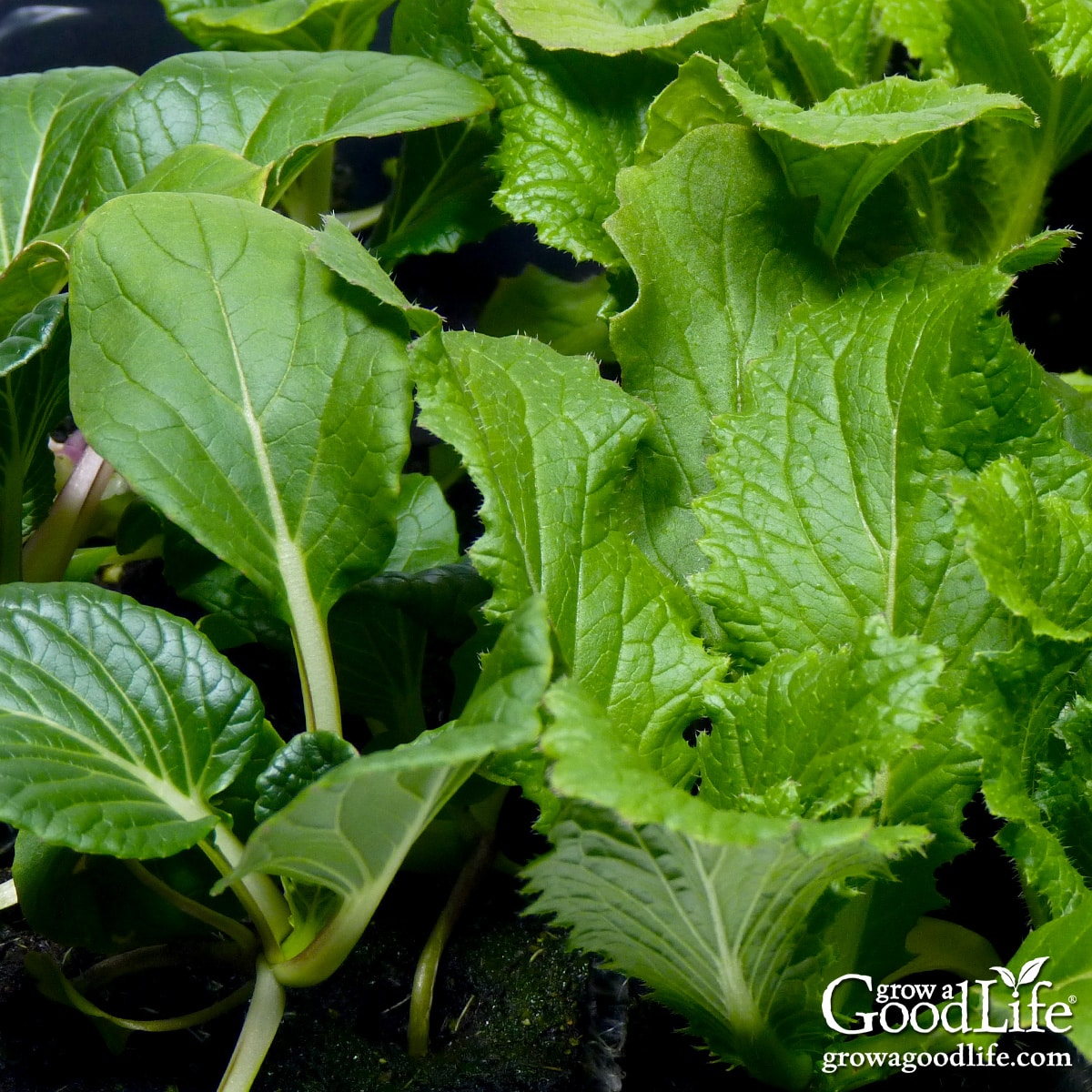
Succession planting is the key to maximizing your garden’s productivity and enjoying fresh vegetables throughout the growing season. By strategically planning when and where to plant, you can keep your garden producing from spring to fall—even in cooler climates.
Whether you’re working with a small backyard plot or a larger garden, succession planting helps you make the most of your space with continuous harvests and less wasted space.
In this article, we’ll explore what succession planting is, four effective methods, and tips to help you implement these techniques in your garden. Let’s dive in and start planning for a productive growing season!
What is Succession Planting?
Succession planting is a gardening method that keeps your garden productive all season long by making the most of available space. Instead of leaving gaps after harvesting a crop, you replace it with another, ensuring a steady supply of fresh vegetables from spring to fall.
This technique involves growing multiple crops in the same space over a season using strategies like staggering planting times, companion planting, replanting after harvest, or selecting varieties with different maturity rates.
Whether you’re working with a small backyard garden or a larger plot, succession planting is a simple yet powerful way to maximize your harvests and make every inch of your garden count.
Methods of Succession Planting
There are several ways to approach succession planting, and the best method depends on your gardening goals, available space, and climate. These strategies can be used individually or in combination to maximize your garden’s productivity.
Below, we’ll explore four key methods of succession planting with examples to help you apply them in your own garden.
1. Staggered Planting
This method involves planting the same crop every few weeks so the vegetables produce a continuous harvest over a period of time. Instead of maturing all at once, a new crop will be ready as the earlier one finishes.
- Example: Plant a row of bush beans in early summer and sow another row two to three weeks later. As the first batch finishes producing, the second will be ready to harvest.
- Ideal crops for staggered planting include: Bush beans, carrots, cucumbers, leaf lettuce, radishes, and summer squash.
2. Companion Planting
This method pairs crops with different growth rates and maturity times in the same space. A quick-growing crop is planted alongside a slower-growing one, so the fast-growing crop can be harvested before the other takes over.
Examples:
- Sow radish seeds around your squash, melon, and pumpkin plants. The radishes will mature and be ready to harvest well before the vines grow large enough to take over the space.
- Sow lettuce under tomato plants. The tomato foliage will help shade the lettuce, and the lettuce will help keep the tomato roots cool.
- Sow peas along a trellis in early spring. As the peas grow and produce their crop, they’ll naturally enrich the soil with nitrogen. When the weather warms, plant cucumbers at the base of the same trellis. As the peas die back, the cucumber vines will thrive in the summer heat and quickly take over, climbing the trellis to produce their own abundant harvest.
Companion planting can also enhance soil health, attract pollinators, and deter pests.
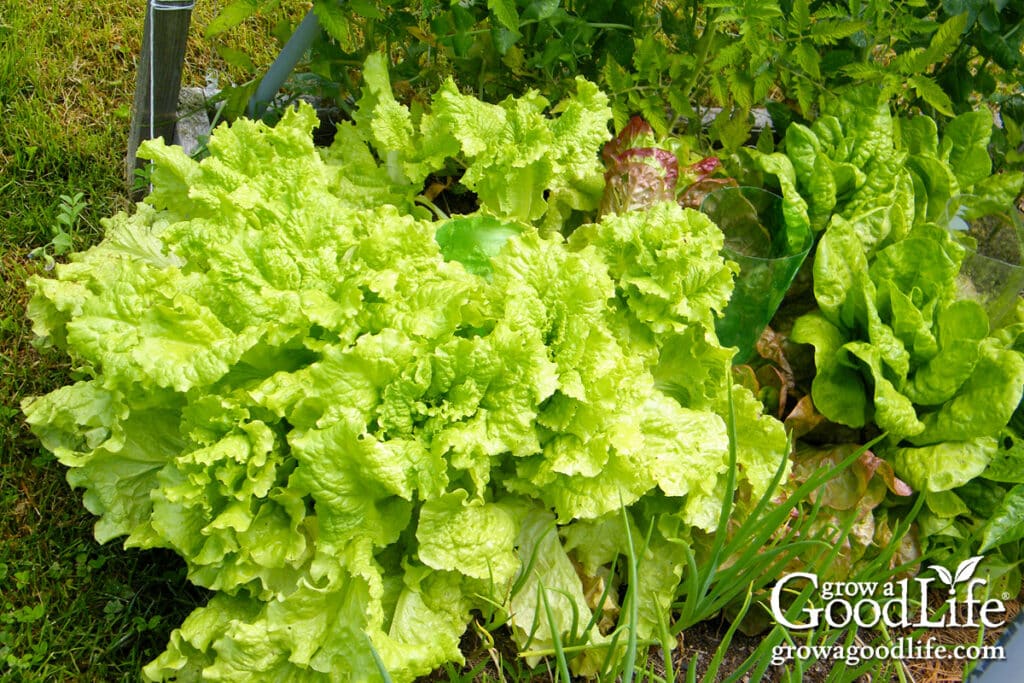
3. Harvest and Sow
This approach involves replacing one crop with another as space becomes available. After harvesting a crop, clear the area, enrich the soil with compost, and plant a new crop to extend your harvest season.
Example crop succession:
- Early spring: Plant leafy greens, such as arugula, spinach, or lettuce.
- Summer: Replace with bush beans or cucumbers.
- Fall: Finish with cool-season crops like kale or radishes.
This method is ideal for extending your harvest into the cooler months of early fall.
4. Same Crop, Different Maturity Dates
Planting varieties of the same crop with different maturity times ensures a staggered harvest from one sowing.
For example, different varieties of carrots, such as Mokum, Napoli, and Nelson, mature quickly and can be harvested in as little as 50 days, while others, including Danvers, Scarlet Nantes, and Sugarsnax, take an extra 20 days to reach maturity.
Examples:
- Carrots: Mix varieties like Mokum, Nantes, and Danvers to spread harvests over time.
- Potatoes: Plant early-, mid-, and late-season varieties for a staggered harvest.
- Corn: Combine varieties with varying maturity dates for extended harvests.
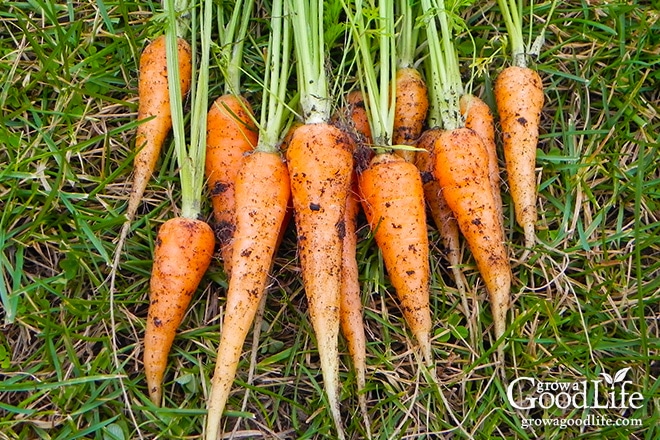
Tips for Successful Succession Planting
Follow these tips to make the most of your garden space and enjoy a continuous harvest throughout the growing season:
1. Know Your Growing Season
Understanding your growing season is vital for effective succession planting. Knowing your region’s frost dates, climate, and seasonal changes allows you to select crops and plan planting schedules that maximize your garden’s potential.
Start with Frost Dates
Identify your area’s average first and last frost dates to guide your planting and harvesting schedule. You can use Plantmaps.com for reference. This information helps you determine how much time you have for each crop before the growing season ends.
Choose Crops Suited for the Season
Selecting crops that thrive in specific parts of the season ensures a steady harvest.
- Early season: For early spring planting, opt for fast-growing cool-weather crops like radishes, lettuce, and spinach. Explore more options here: 15 Fast Growing Vegetables for Spring.
- Mid-season: Transition to warm-season crops like tomatoes, peppers, beans, and squash. You can purchase seedlings or grow transplants indoors under lights: 10 Steps to Starting Seeds Indoors.
- Late season: As summer transitions to fall, quick-growing vegetables like baby carrots, turnips, and spinach can fill your garden beds and provide a bountiful late-season harvest. Check out this guide for inspiration: 13 Quick Growing Fall Vegetables.
Examples from My Garden
Understanding the growing season in my garden has helped me achieve continuous harvests. My succession planting begins in early spring with cool season crops such as lettuce, spinach, Asian greens, and other salad greens that are started under lights and transplanted to the garden.
Other early spring crops that can be directly seeded in the garden once the soil temperatures warm are carrots, radishes, and beets. Most of these plants will mature in 30 to 60 days. Once these are harvested, another crop can take their place.
As the growing season transitions to frost-free nights, warm weather crops can replace the spring crops. Even in our short summers, some warm-season crops, such as bush beans, summer squash, and cucumbers, can be planted two or three weeks apart and still mature before the first frost. The newer plantings start producing when the older plants begin slowing down or are affected by disease.
As late summer weather cools and the summer crops finish, the space is replaced with cool weather crops that can withstand light frosts, thrive in shorter daylight hours, and tolerate the cooler nighttime temperatures of fall. Again, we rely on lettuce, spinach, Asian greens, and other salad greens started as transplants and planted into the garden as space opens up.
As fall approaches, I use row covers to protect late-season crops like spinach and kale from the first frost. This planning allowed me to enjoy fresh harvests well into fall.
2. Plan Your Garden in Advance
A well-thought-out plan is key to successful succession planting. By mapping out your garden and scheduling planting dates, you can ensure a smooth transition between crops and minimize downtime, keeping your garden productive throughout the growing season.
Map Your Garden Beds
Start by sketching your garden layout to determine the best use of space. Group plants with similar growing needs together, and leave room to rotate crops in future seasons. Learn how to organize your garden space here: Map Your Garden Beds.
Consider dedicating whole beds to crops in the same family or type of crop to make it easy to rotate the beds from season to season and to plan for succession crops. Usually, the crops in the same family share similar watering and fertilizing needs and mature at the same time.
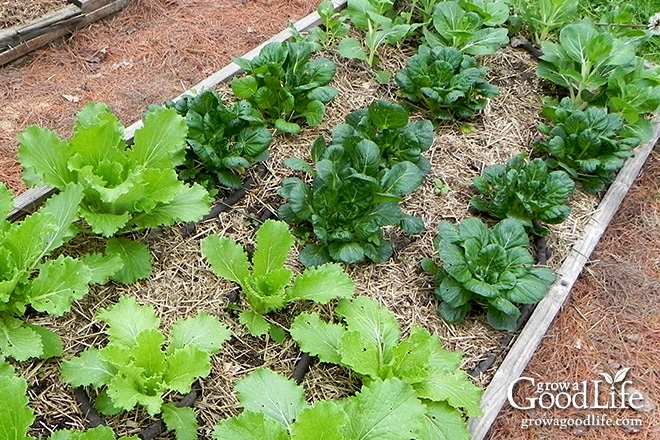
Develop a Planting Schedule
Planning what to grow and when ensures you’re always ready to fill gaps as crops finish. Create a planting schedule that factors in frost dates, crop maturity times, and seasonal weather changes. Use this guide to create your own planting schedule: Develop a Planting Schedule.
Grow Transplants
You don’t have to wait for a crop to be finished in the garden before planting the next succession. Growing seedlings in pots and trays can give them a head start. When space opens up, you can transplant healthy seedlings instead of planting seeds.
Some seeds will not germinate when it is hot. Start these under lights indoors, harden them off, and plant them in the garden when the weather is cooler. Water well and shade the transplants in the heat of summer. See How to Build a Grow Light System and How to Harden Off Seedlings.
I’ve found this approach especially helpful for fall crops like broccoli, cauliflower, kohlrabi, collards, and Swiss chard. I start these plants early by sowing seeds in July indoors under lights in our cool basement. Once the weather cools down, I harden them off and transplant them into the garden as space opens up.
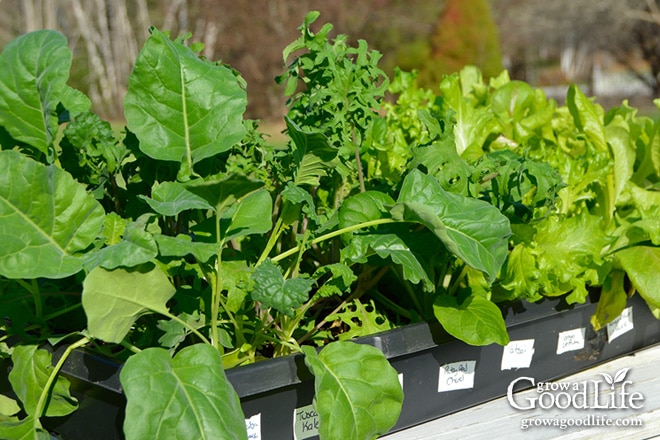
Keep Track with a Garden Journal
A garden calendar or planner is essential for organizing notes, schedules, planting, and harvest dates. Tracking your efforts helps you identify what worked well and what to improve in future seasons. Here are tips on keeping a gardening journal: How to Keep a Garden Journal.
Examples from My Garden
In my garden, planning has made a huge difference in maximizing harvests. One year, I planted early-season spinach in one bed, followed by green beans mid-season, and finished with a quick-growing crop of baby carrots. Mapping out the timing for each crop ahead of time ensured I made the most of the growing space while enjoying fresh produce throughout the season.
3. Nourish Your Soil Regularly
Succession planting allows for continuous harvests, but it also places demands on your soil. Frequent planting can deplete nutrients, so it’s essential to replenish the soil between plantings to keep it fertile and productive.
Replenish Nutrients with Compost and Organic Matter
Before replanting, enrich your soil with compost or well-aged organic matter. This restores essential nutrients and improves soil structure, ensuring your plants get off to a healthy start. Discover ways to nourish your soil here: How to Improve Garden Soil.
In my garden, I rely on homemade compost. After harvesting, I spread a thin layer over the bed and work it into the soil. Not only does this boost fertility, but it also enhances moisture retention and soil aeration.
Rotate Crops to Reduce Pests and Diseases
Crop rotation is a valuable technique to prevent soil-borne diseases and minimize pest buildup. Planting different crop families in the same space each season breaks pest and disease cycles that can harm your plants. Learn more about crop rotation here: How to Rotate Crops in the Garden.
For instance, after harvesting tomatoes, I’ll follow with leafy greens or legumes. This practice has reduced the prevalence of common pests like tomato hornworms and improved overall soil health.
Use Organic Mulch for Soil Health
Organic mulch helps retain soil moisture, regulate temperature, and add organic matter as it decomposes. Apply a fresh layer of mulch after planting to keep your garden beds healthy and reduce weeds. Find out how organic mulch benefits your garden here: How Organic Mulch Helps Your Garden.
Incorporate Cover Crops Between Plantings
Cover crops are an excellent way to replenish soil nutrients and improve its structure. Crops like clover, vetch, or rye can be grown during the off-season or between plantings to prevent erosion, fix nitrogen, and suppress weeds. Learn more about using cover crops here: Cover Crops for Home Gardens.
4. Monitor Your Garden
Keep a close eye on your plants to ensure they are growing well and to identify opportunities for replanting. Remove spent plants promptly to free up space. Check for pests and diseases to prevent issues from spreading.
Weather can be unpredictable, so protecting your plants from frost is essential for extending your growing season. Use row covers, cloches, or blankets to shield crops from unexpected temperature drops. Learn more tips here: 6 Ways to Protect Plants from Frost.
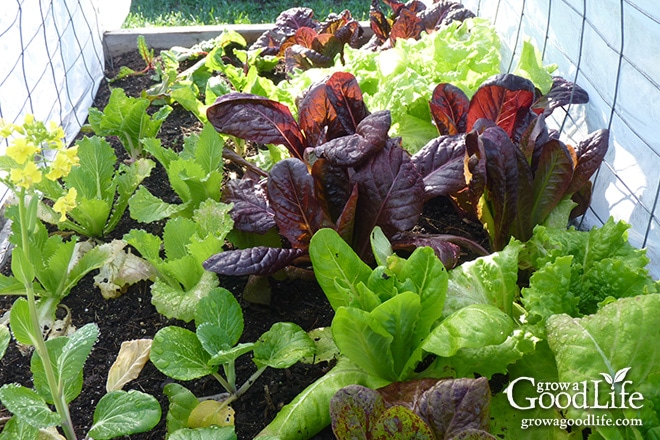
Experiment with Succession Planting and Discover What Works for You
Every garden is different, and succession planting takes practice. Don’t be afraid to experiment with different crops and schedules to find what works best for your space, soil, and climate.
Succession planting is a rewarding way to keep your garden productive throughout the growing season. By planning ahead, understanding your growing season, and maintaining healthy soil, you can enjoy a continuous harvest of fresh, homegrown vegetables from spring to fall.
Start small and build on your successes. Over time, you’ll find the rhythm that works for your garden and gain the confidence to try new approaches.
I hope these tips inspire you to think creatively about maximizing your garden’s potential.
This article was originally published in July 2015. It has been updated in 2025 with additional details, tips, examples, and resources to help you make the most of succession planting in your vegetable garden.
You May Also Like:
Succession planting is just one strategy to make the most out of our growing season, here are several more for you to explore:
- How to Develop a Garden Growing Schedule
- 13 Quick Growing Crops for Your Fall Garden
- Mapping the Garden Beds
Good planning is key to a successful vegetable garden
Whether you are new to growing your own food or have been growing a vegetable garden for years, you will benefit from some planning each year. You will find everything you need to organize and plan your vegetable garden in my PDF eBook, Grow a Good Life Guide to Planning Your Vegetable Garden.


Very helpful – thank you! I am trying out vegetable growing in Oslo, Norway (Zone 4, I think), so your examples from Maine were a good guide.
Josephine, I never thought about it, but our growing seasons are indeed very similar. Our last frost date is mid-May, and the first is mid-October.
Succession planting is something I struggle with…mostly because of my work schedule and lack of adequate planning. You gave good examples of different ways to make the most of my space and growing season – thank you for the inspiration and information!
Succession planting used to be struggle for me as well. Now I start planning the whole growing season in winter. Things get so busy when summer arrives and it helps to know what to sow or transplant in all the beds once a crop is finished.
I like the concept. I’ve done a little succession planting. This season, I plan to put in a second round of lettuces in late August for lunches in the fall. I’ve staggered bean crops with good results. There’s nothing like fresh beans!
Each year, I say I’ll do succession plantings, but then life gets in the way & I forget or simply am too busy and only end up doing one or sometimes none at all. I’m not planning any additions to the garden next year, so I’m hoping that I’ll have the time really give it a more earnest effort.
Margaret, I have the same problem. Once the initial planting is done, I stay busy doing other things. I have another post that addresses this that will be published in a weed or so. I find that planning certain crops to follow others helps me to remember what to do next.